By Christopher Miskimon
When built, the French Surcouf was the largest submarine in the world. She was named for Robert Surcouf, the famed French privateer who waged successful economic warfare against England during the Napoleonic era. This Goliath was intended as a modern-day corsair able to do her namesake proud. Instead, the submersible wound up in England, having fled the advancing Germans in the spring of 1940. Once there, she played host to a tragic gunfight between French and British sailors.
The ill-fated submarine was laid down in 1927 but not commissioned until 1934. Surcouf was intended as the lead boat of a series of large “cruiser” or “corsair” submarines, heavily armed to hunt enemy shipping. Besides her dozen torpedo tubes, Surcouf sported a pair of eight-inch cannon mounted in an oval-shaped turret at the front of the superstructure, just ahead of the conning tower. A small hangar supported a floatplane for scouting and spotting. A contemporary edition of Jane’s Fighting Ships listed her as 393.7 feet long and displacing 4,300 tons submerged. Her speed was 18 knots surfaced, 10 submerged.
Intended to be a shark-like leviathan among the world’s undersea fleets, Surcouf was instead a whale. Plagued by mechanical problems and poor seakeeping qualities, the vessel never lived up to its reputation. When the German invasion of France came, Surcouf was sitting dockside at Brest, a port city on the Breton Peninsula. As the advancing Germans drew near, the submarine was moved to England, hopefully to finish repairs there and make her battle worthy.
Unfortunately, her engines were inoperable. Three of the connecting rods in the two diesels were broken. Only the electric auxiliary motors were usable. As the sun set over the English Channel on June 18, 1940, Surcouf limped slowly toward Britain at only four knots, her best speed. In her disabled state she could not submerge. Nevertheless, according to the ship’s doctor, Bernard Le Nistour, “All of us hoped to continue the fight … morale was high; the physical fitness of the crew excellent.”
What to do With the French Navy?
Just after dawn the next morning a Royal Air Force Short Sunderland flying boat spotted the submarine and exchanged recognition signals with it. Off Penzance at England’s southwestern tip, Surcouf stopped while her engineers made some improvements allowing 10 knots the rest of the way to Plymouth and later Devonport. Along the way, English beachgoers waved at the submarine with her French flag. At Devonport, Surcouf tied up alongside the World War I-era French battleship Paris. Nearby were two more French submarines and a destroyer. Within a few days, French officials were surrendering to the triumphant Nazis in the same railroad car where the German surrender ending World War I had been received in November 1918.
A critical issue of France’s surrender for the British government was the fate of the French fleet. The surface fleet of Germany’s Kriegsmarine was too small to pose an existential threat to the United Kingdom, though its surface raiders and U-boats were a dire threat. If the surface units of the French fleet, including battleships, cruisers, destroyers, and a single aircraft carrier, were transferred to Germany, it would create an intolerable imbalance of forces. The victorious Germans made promises not to seize France’s navy, but by then Hitler’s guarantees were no longer believed.
It was more than Great Britain could risk. Furious efforts were made to secure the French fleet by entreating its commanders to either continue the fight alongside Britain as part of the nascent Free French movement or incorporate their vessels into the Royal Navy. Alternatively, they could accept internment in the United States or a distant French possession such as Martinique in the Caribbean. Much of the Navy had already been moved to North Africa or sat in port in Vichy territory not yet occupied by the Nazis. As a last resort, the crews could scuttle their ships.
In the days immediately after the French surrender, tension began to grow as it was uncertain what France’s sailors would do. Few of them opted to join the Free French, and most thought Great Britain would make terms with the Germans within weeks at most.
Britain, however, elected to continue the fight and took steps to neutralize its ally’s warships. At Devonport, hundreds of French sailors could not help but notice the guns of the British battleship Revenge laid on their ships and submarines. At home, Vichy France’s new leaders were determined those ships would not fall into British hands, though most were equally resolute they would not be turned over to the Germans either.
The Plan to Seize the Surcouf
In the case of Surcouf, preparations were made to protect her from any British seizure attempt. Her torpedoes were already disarmed. The captain, Paul Martin, ordered all but one hatch locked down. The open hatch, nearest her bow, was guarded by two armed sailors at all times. A petty officer was tasked to watch for approaching boats or frogmen. Since Surcouf was tied to Paris, no one could get on the ship that way without first boarding the battleship. This gave an added measure of security. If the British came to take his vessel, the sentries were to give warning by dashing through the open hatch into the submarine so it could be scuttled.
Finally, the order came from Vichy to destroy the submarine on Wednesday, July 3, 1940. Before dawn a radio message came in. The operator took it to the duty officer, Lieutenant Emile Crescent. He retrieved the codebook from the safe and began deciphering the transmission. When finished, he hurried to Captain Martin, calling out, “The English are coming.” He was trying to provide the 140 crewmen with the time to sink their submarine. Little did he know, the Royal Navy had already enacted its own plan to take the French ships in Devonport and elsewhere. The British were not coming—they were there.
Intent on denying Germany any of France’s ships, the British planned to seize all French naval vessels in British ports. Each ship was assigned a boarding party commensurate with its size. Officers carried revolvers, as did some sailors, who also hefted wooden clubs. Royal Marines and some sailors also toted bayoneted rifles, which might prove unwieldy below decks.
Various letters exhorting the French sailors to surrender were issued, and all personnel wore the British-pattern steel helmet, which would help with identification. The boarding party assigned to Surcouf numbered 60 men, half Marines and the rest crewmen from the British submarine Thames. They were to seize the submarine without bloodshed if possible. The group was commanded by Captain Denis Sprague, nicknamed “Lofty,” of the Thames. His second was Lieutenant Patrick Griffiths, who had served as a liaison officer and visited Surcouf a few days before.
The British Boarding Party
The British move began at 0430, just before dawn. Rather than cross to Surcouf from the neighboring Paris, Sprague led his men from the water side using a trio of motor launches. Another Thames officer, Lieutenant Francis Talbot, was first aboard the submarine. His boarders quickly followed and surprised one sentry, capturing him. The other guard thought more quickly and ran to the one open hatch, banging on the hull as he went. The hatch shut as soon as he disappeared through its opening. The English had not planned on all the hatches being shut and were now locked out.
Below, Lieutenant Crescent, the decoded message still clutched in his hand, saw the sentry come through the hatch. The man reported the boarding party above. Crescent told the man to sound action stations as he went to alert the other officers and rouse the Surcouf’s lead electricians and torpedomen, ordering them to start destroying equipment.
Only a minute later, the Frenchmen rushed back to the bridge and ran into Captain Sprague and his armed sailors, who had gained entry. The observant Lieutenant Talbot had climbed Surcouf’s conning tower and inspected its hatch. There, he noted the catches were designed to be opened from the outside by rescue divers in case of disaster, just like the hatches on British subs. The young Talbot would be “mentioned in despatches” for his quick thinking.
The boarding party quickly spread through the vessel and opened the rest of the hatches to allow their comrades in. Sprague asked all the French officers to gather in the wardroom, and they complied. The French enlisted sailors were less cooperative; some refused to move at all, and some had to be awakened. With all the officers in the wardroom, Sprague read them a letter claimed to be from French Admiral Coyal aboard Paris. The letter, apparently a fake, begged the Frenchmen to join the Free French.
Captain Martin did not believe the letter and asked to meet Coyal and hear the message in person. Sprague agreed to let him go even though he knew the letter was false. Martin placed a junior captain named Pichevin in command and departed.
French Crew at Gunpoint
This left the crew at an impasse, which the British seized upon to try and peacefully take the submarine. Lieutenant Talbot convinced the French sailors in the forward section of the boat to leave peacefully, including the men assigned to destroy equipment. Afterward, he went aft with Sprague to try and repeat his success. Some of the French sailors seemed inclined to cooperate. As a British midshipman climbed a ladder, he dropped his revolver, sending it clattering to the engine room deck. A French sailor grabbed the young Englishman by the seat of his pants and hauled him back down before calmly returning the handgun to its holster.
Sprague returned to the bridge and saw Pichevin passing a note to a French sailor. The note told him to cut the power and wreck the ship in the ensuing darkness. The electrician excused himself to urinate, but a British petty officer followed him. When the Frenchman lunged for the switches, the British sailor knocked him unconscious with a mallet and quickly turned the lights back on. During the brief blackout, one French engineer, Yves Daniel, disappeared into his cabin from the wardroom and began tearing up his manuals. His cabin mate, Surgeon Le Nistour, stood guard outside. Sprague decided he had had enough and ordered all the officers off the submarine.
Pichevin flatly refused and immediately went to his own cabin. Several of his officers shielded him from view as he grabbed a pistol. Lieutenant Crescent boldly stated he would not leave until Captain Martin returned.
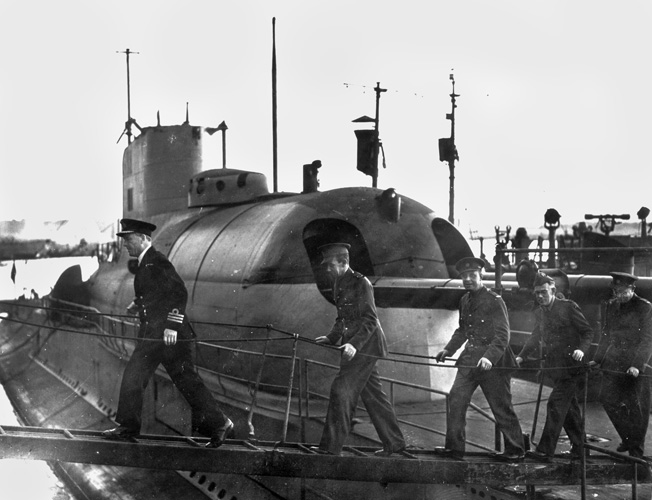
Sprague spoke French and, revolver in hand, told Crescent, “I have my orders. If you don’t leave I’ll kill you.” British Lieutenant Griffiths and Able Seaman William Heath also drew their weapons. Crescent dared them to fire. Sprague called for assistance, and sailors under Lieutenant Talbot and Chief Petty Officer Herbert Mott appeared. Mott assigned Leading Seaman Albert Webb to cover the French officers with his Lee-Enfield rifle, a wicked looking 17-inch bayonet jutting from its muzzle. Standing next to Crescent were Pichevin and a French midshipman named Massicot. Behind stood Lieutenant Bouillaut, who commanded Surcouf’s eight-inch battery. In his pocket was a loaded .32-caliber automatic pistol he carried for protection when on shore leave.
“Things are Getting Hot”
The momentary impasse was shattered when Sprague turned to Webb and told him to shoot Crescent. The French, particularly Bouillaut, suspected a bluff since Sprague had issued his orders to Webb in French. Still, the French lieutenant thought Sprague would not tolerate having this bluff called. Calmly, he drew the automatic from his pocket and opened fire. Sprague was hit in the neck, collarbone, and stomach. An artery severed, he fell against the door to the captain’s cabin, firing one shot, a miss, as he fell. Lieutenant Griffiths was hit in the arm, hip, and liver. He collapsed upright against the ladder leading up to the bridge. Chief Petty Officer Mott was at the top of that ladder and returned fire. One of his bullets struck Bouillaut in the arm before continuing into his chest. Though bleeding badly, the French officer reloaded his pistol and looked around. The British men in the wardroom were all down. All the Frenchmen had drawn their weapons. Screams and the sound of a weapon hitting the deck came from an adjoining cabin.
In that cabin, Engineer Yves Daniel was busily destroying his manuals when Surgeon Le Nistour came back in and grabbed his pistol. Le Nistour told Daniel, “Things are getting hot.” No sooner had he given this warning than Bouillaut opened fire in the wardroom. As the deafening shots echoed through the submarine, Leading Seaman Webb burst into the cabin and lunged at the two French sailors with his bayonet. Behind him came Able Seaman Heath with a revolver. Le Nistour emptied his magazine into Webb. Seven of these bullets passed through Webb into Heath. As Webb fell, he fired his rifle, hitting Daniel in the shoulder before plunging his bayonet into the engineer. Both toppled to the deck. Heath was still on his feet, so Le Nistour, his pistol empty, punched the British sailor and took his revolver.
After this furious exchange of fire, a dread silence fell over the wardroom. The Frenchmen looked around at the butchery they had wrought. Surgeon Le Nistour tended to Bouillaut’s injuries, which were not serious. Crescent turned to Bouillaut and told him, “I believe you were very wrong to have done that.” The injured man retorted that Crescent would be dead if he had not acted.
Four Deaths on the Surcouf
Now the officers of the Surcouf had to decide what to do. They held the wardroom but nothing else. The British would have to come and get them, but they could not hope to hold off a now enraged boarding party. Pichevin chose to surrender. Bouillaut alone wanted to fight on, but Pichevin mildly took the pistol from the gunnery officer’s hand and laid it on the wardroom table. He called up to the bridge and told them it was over. Lieutenant Talbot told them to lay down their arms and come up the ladder to the bridge one at a time. Pichevin led the way.
Once on the bridge, the French officers again became difficult and refused to leave without orders from Captain Martin. Eventually, Lieutenant Crescent agreed to speak with Martin provided he could return afterward. Talbot consented. Crescent found Martin, who gave the order to leave the submarine. Only Le Nistour remained so he could bandage Bouillaut. Several British sailors asked the French surgeon to check on their own wounded officers, but Le Nistour made them wait while he worked on Bouillaut. Eventually, he pronounced Griffiths dead but saw some life yet in Sprague, who could barely speak.
Talbot became increasingly enraged as time passed without medical attention for his fellows. While the British plan included ambulances standing by, it had neglected to attach any medical personnel for immediate aid. It took 25 minutes to get a doctor to Sprague and 40 to attend Griffiths, who was actually still alive. In the meantime, Le Nistour gave him a morphine injection even though he was sure Griffiths would not live.
The French surgeon was just about to help with Sprague when Seaman Heath appeared. His seven injuries were miraculously only flesh wounds, and he told his shipmates Le Nistour had shot him. At first no one believed him, assuming the young man was in shock. When Talbot realized Heath was lucid, he had Le Nistour taken away, and a doctor from the Paris was brought in. Several nervous and angry British sailors held this doctor at gunpoint while he examined the mortally wounded Griffiths before British doctors arrived and he was hustled back to his own ship.
A French priest was summoned next and gave absolution to Daniel and Webb. Sprague and Griffiths were taken to Plymouth Naval Hospital in the same ambulance as Bouillaut. The Frenchman recovered fully; Sprague died the next day, and Griffiths one day later.
Bouillaut’s Account of the Shooting
The crew of Surcouf was sent to a camp set up on a racetrack in Liverpool. Before leaving, the crewmen were allowed back on their submarine to collect their personal belongings. Several of the French officers were missing items and accused the British of theft. Bouillaut later submitted a list of his “stolen” property since he had been recovering and unable to go to the submarine. Included on his claim was his .32-caliber automatic. Within days, he was transferred to a civilian hospital, coincidentally the same day the dead from the Surcouf gunfight were buried.
The only Frenchman killed, Yves Daniel, was buried at Weston Mill Cemetery in Plymouth. Bouillaut demanded to attend his shipmate’s funeral, but since Bouillaut had pointlessly killed two British officers this was denied. The British slain were also buried there the same day, so perhaps the authorities merely sought to prevent the dead men’s families from meeting the killer.
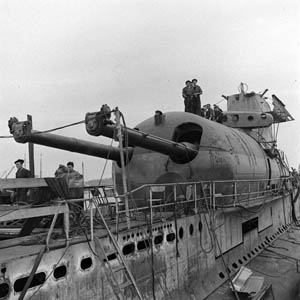
During his hospital stay Bouillaut wrote an account of the action aboard Surcouf, and copies were circulated among his fellow French internees in the hope at least one would make it back to France. In this account he admitted opening fire without orders and included Lieutenant Crescent’s remark that Bouillaut should not have fired. It nearly doomed him. In mid-November both Bouillaut and Le Nistour were allowed aboard the French transport Djenne for the voyage home. When a confiscated copy of Bouillaut’s account was read by British officials, several considered it essentially an admission he had murdered two British officers. They had the Frenchman removed from the ship and jailed to await prosecution.
Bouillaut quickly began a letter-writing campaign, claiming he had only done what any officer would under the circumstances. Eventually, the British decided that executing a French officer would only heighten the tension with Vichy France, increasing the risk of its navy being transferred to Germany. Bouillaut was released and sent home.
While Bouillaut met a more pleasant fate, Surcouf was not so lucky. Eventually taken over by Free French forces, the mammoth submarine sank after a nighttime collision with an American cargo ship in the Caribbean around February 18, 1942, though conspiracy theories of nefarious American action abound.
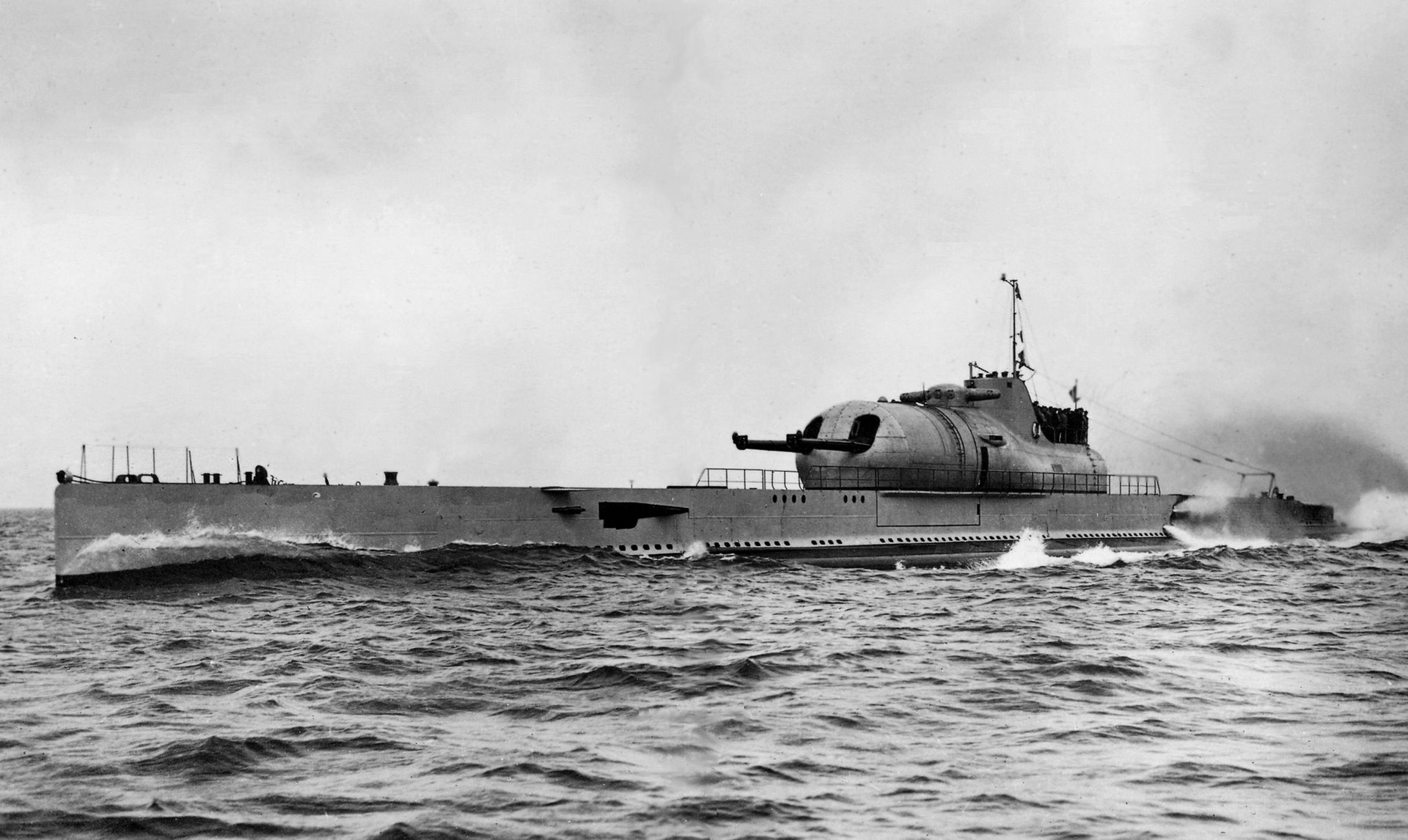
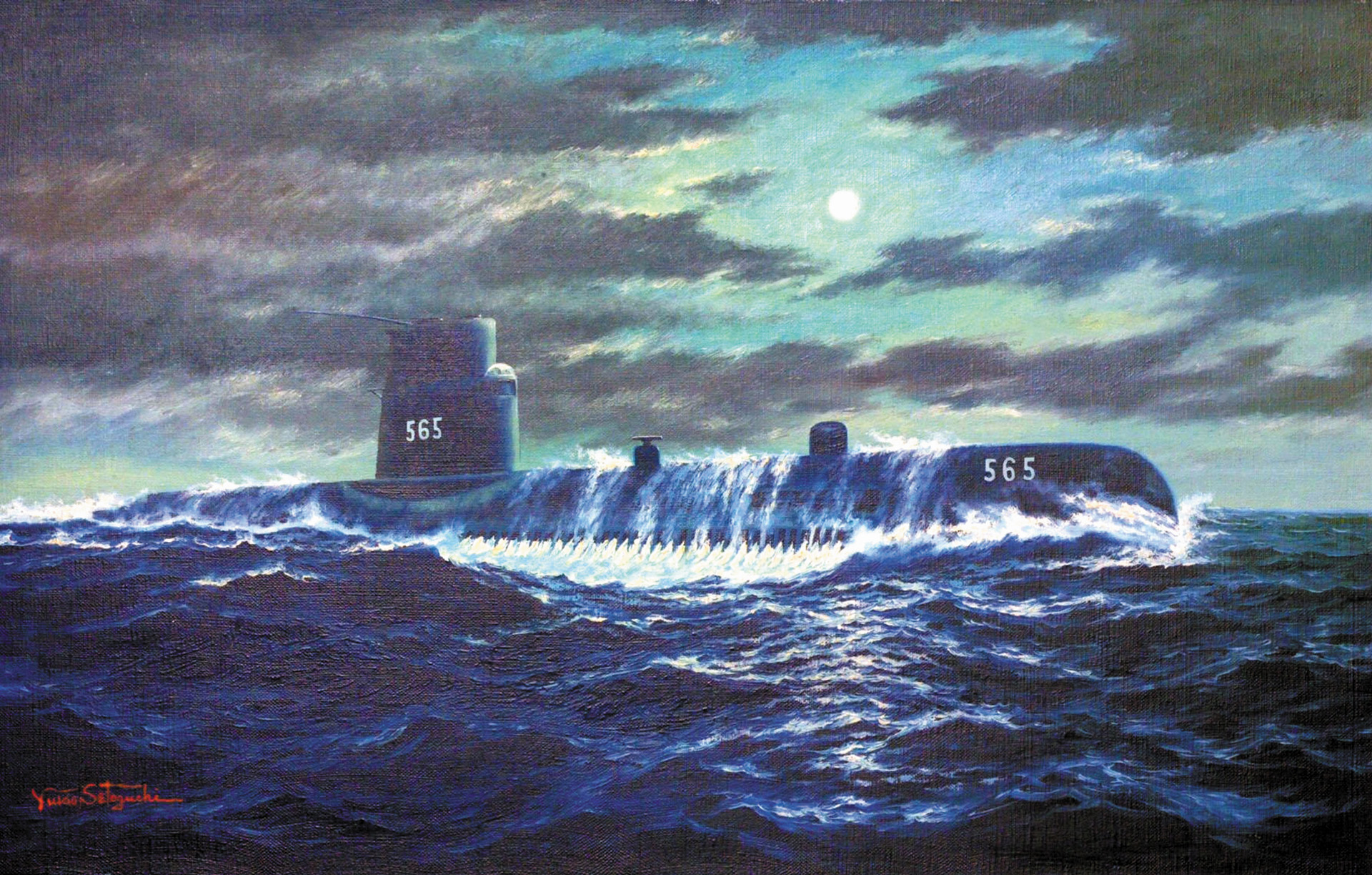
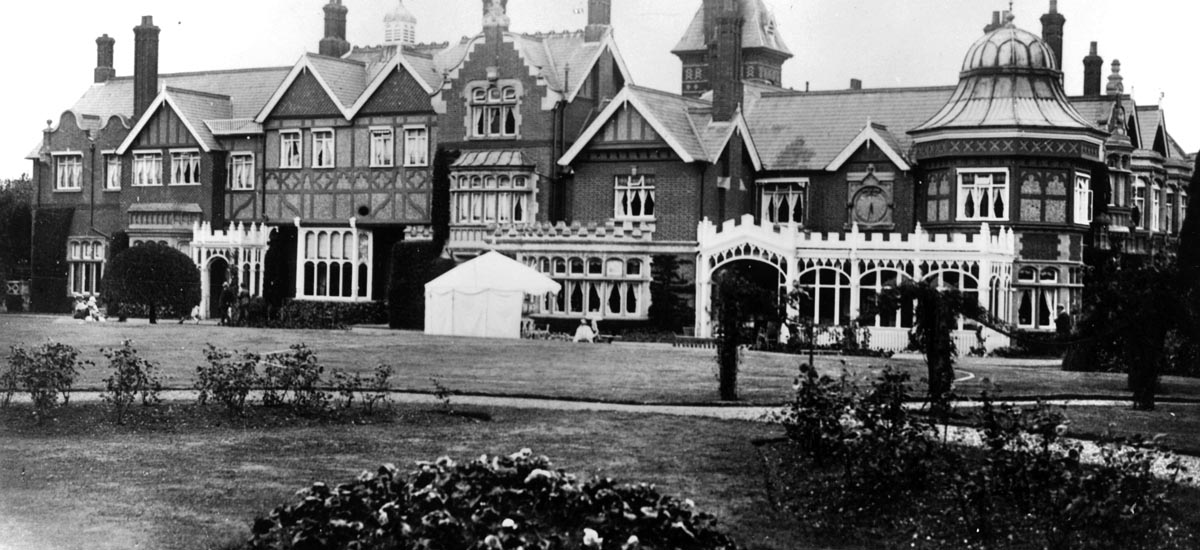
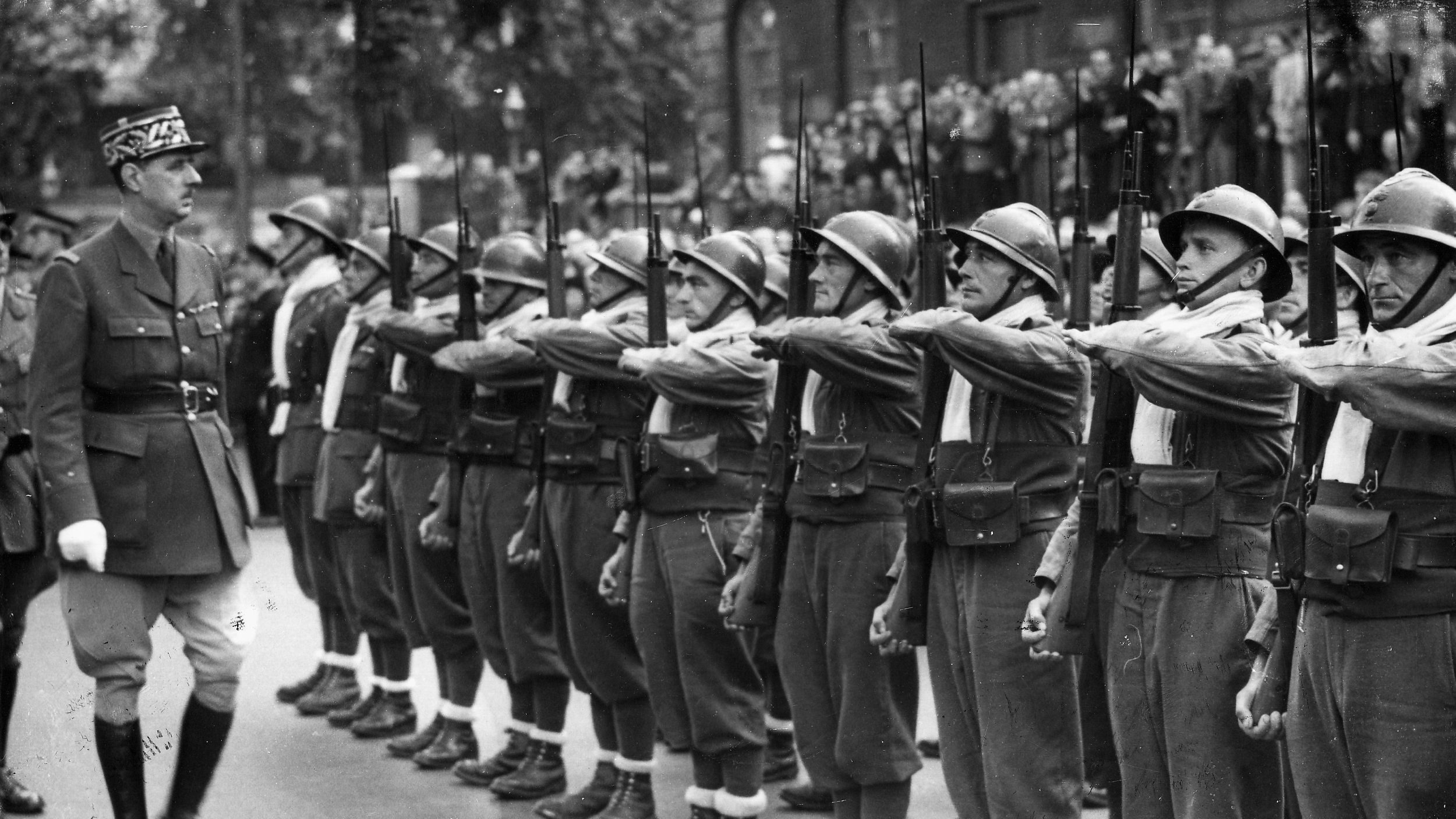
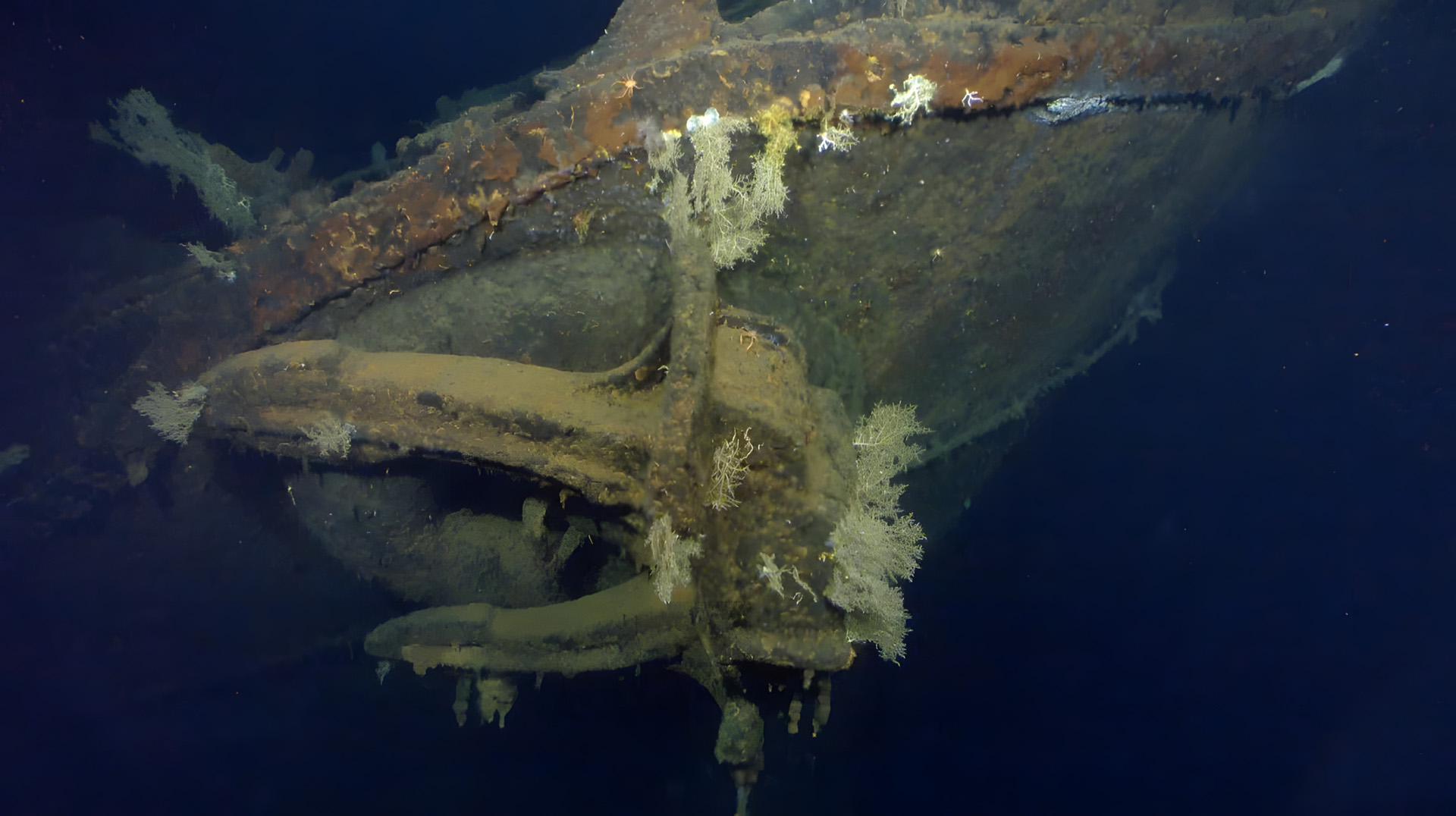
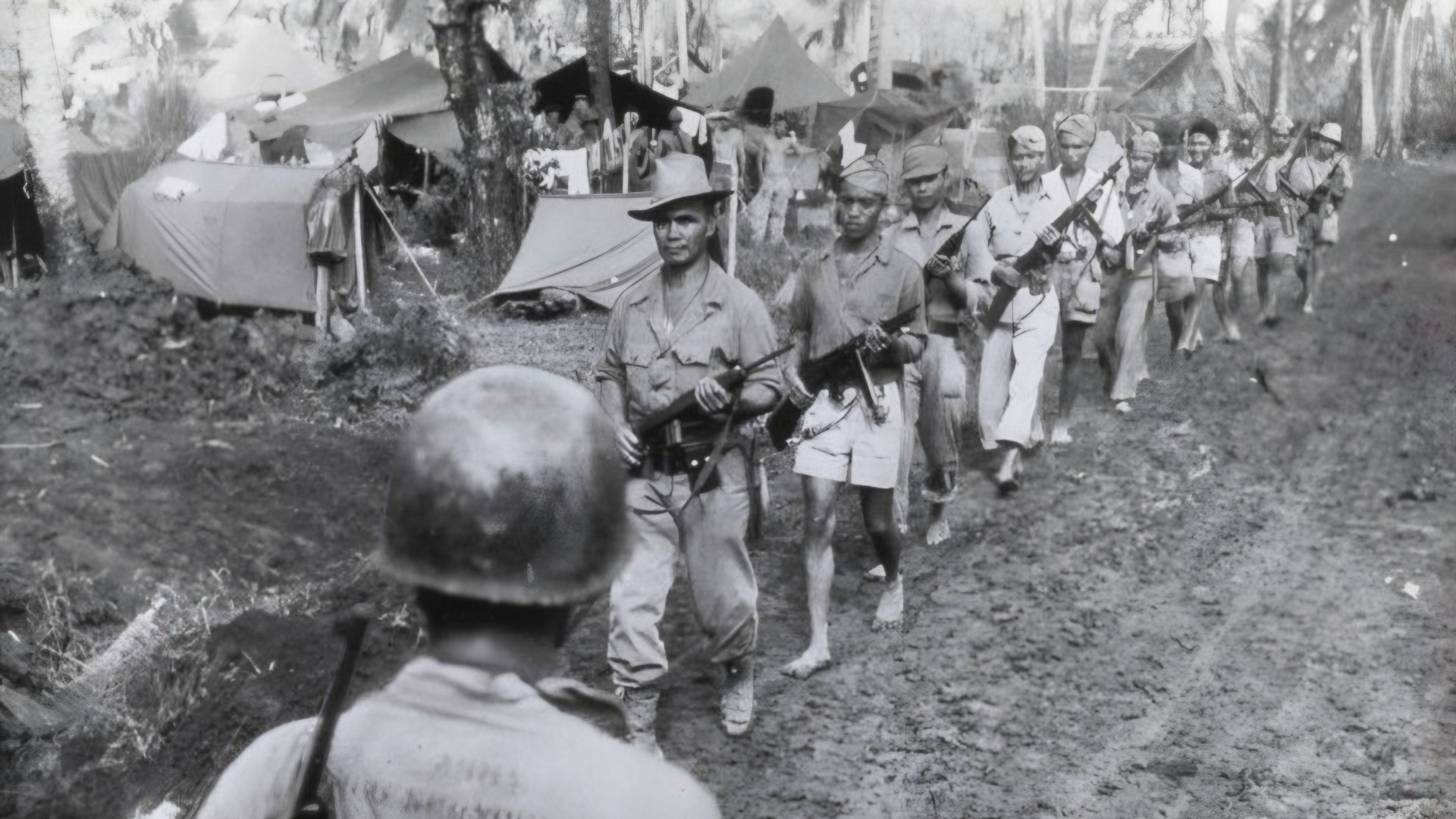
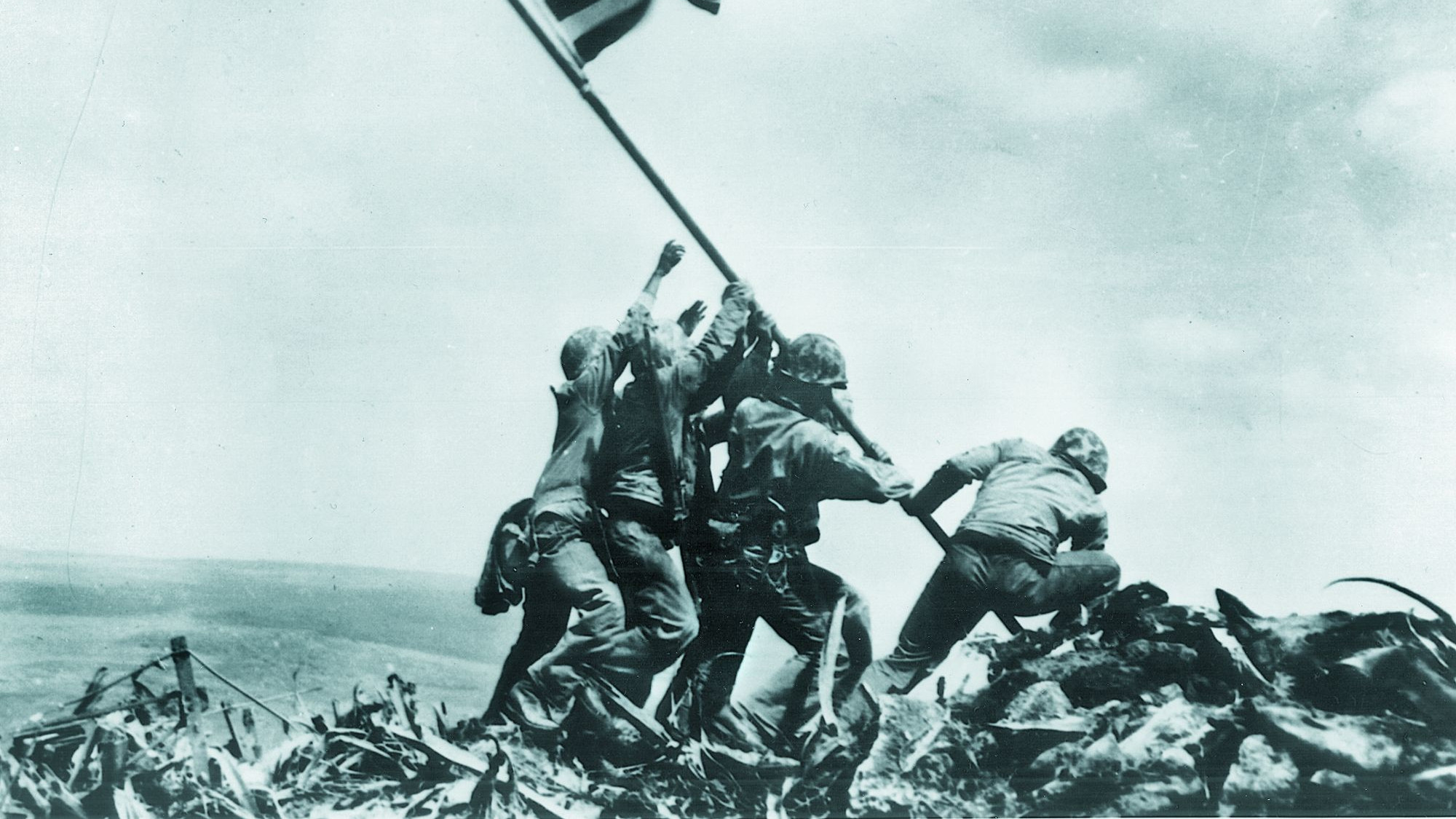
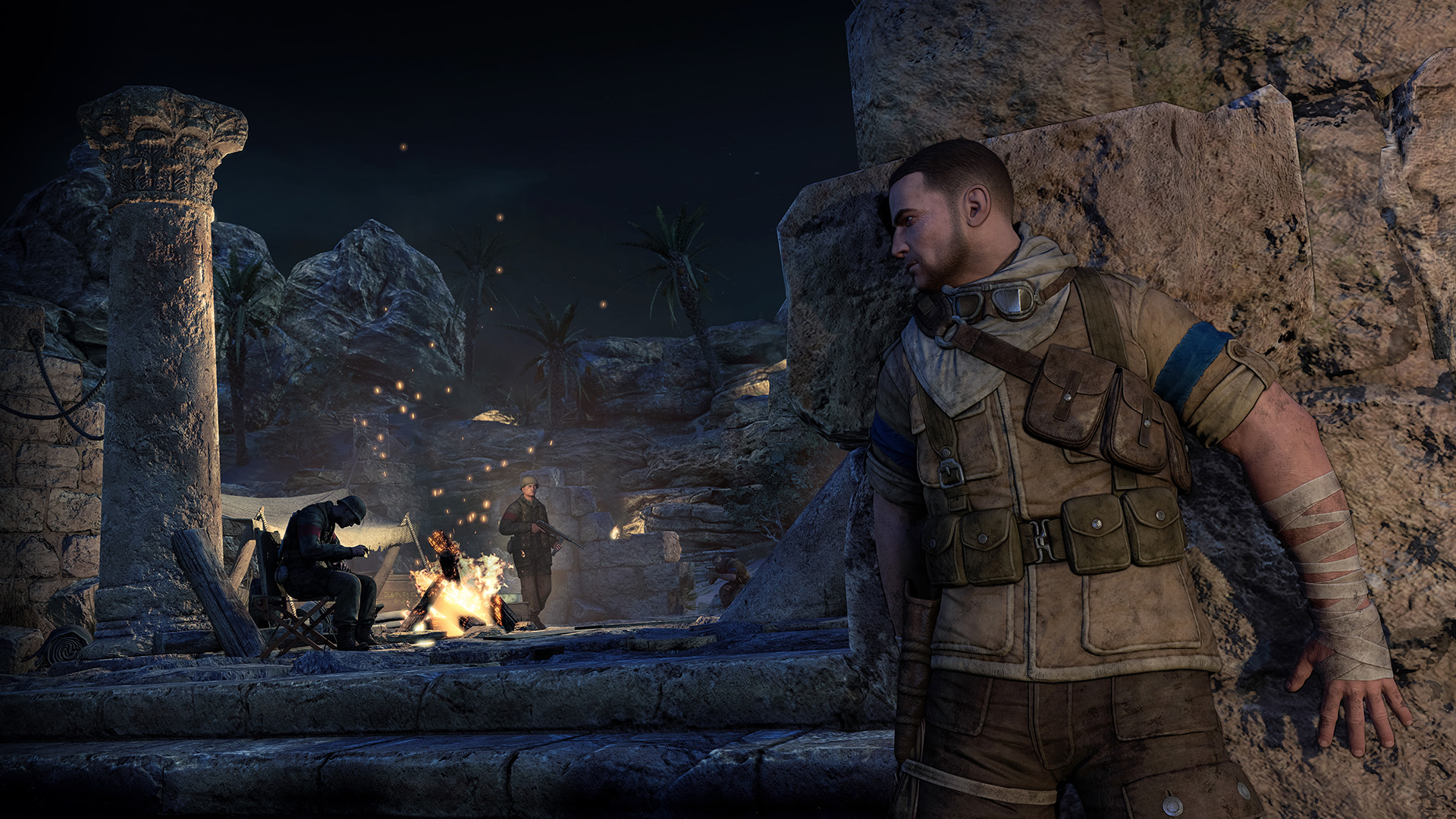
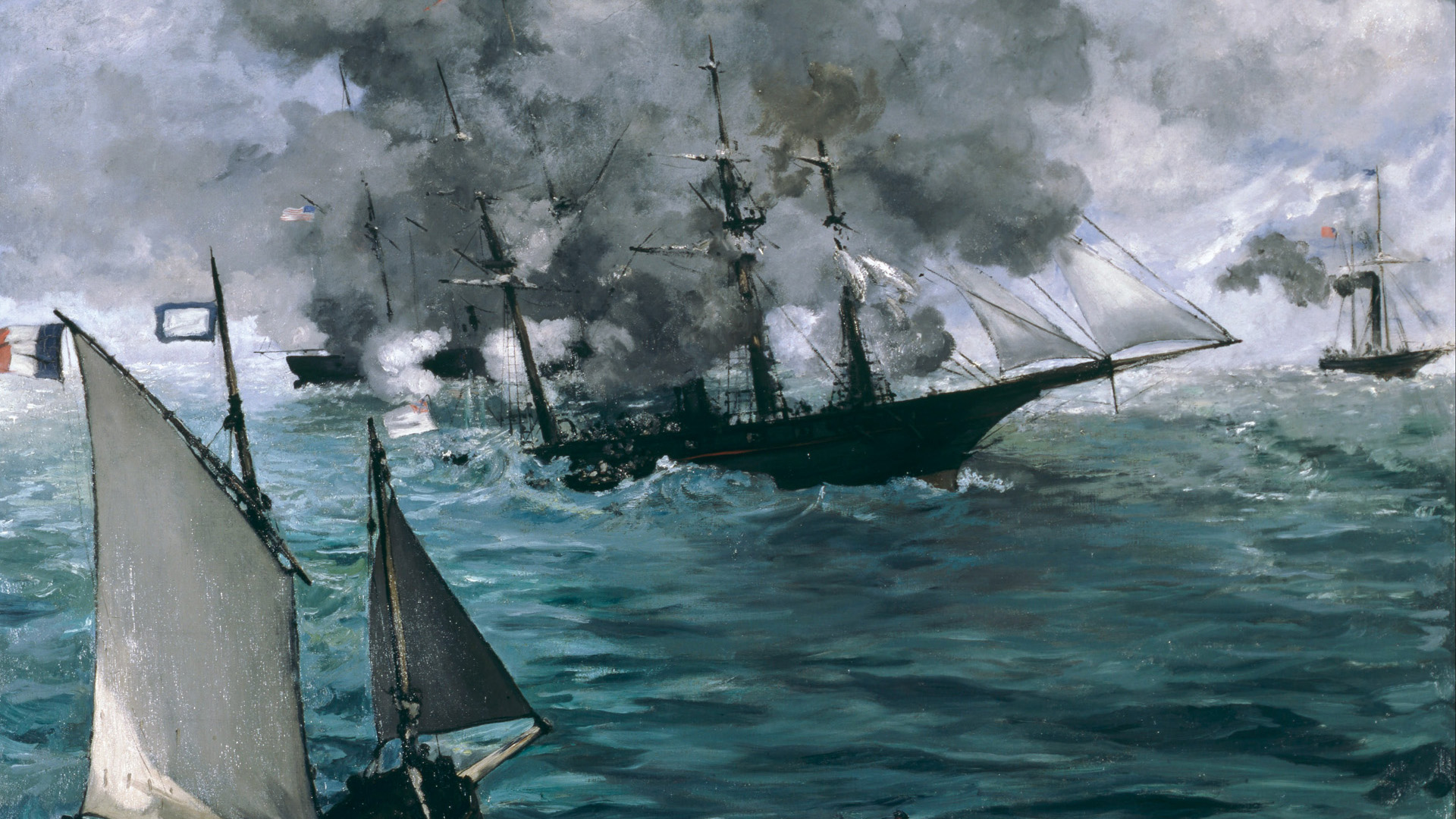
Albert Webb was my grandfather. It is great to be able to read in detail about his death. My mother was orphaned as a result of this and captain spragues wife took and interest in her.
What amazing story, I had no idea of any of this. Thank you so much for sharing.
Kind regards,
Dave Meadowcroft
During my childhood, I often visited the Cross of Lorraine on a hillside at Greenock overlooking the Clyde. There are plates depicting the Surcouf on this monument.. This is a very poingnant story.
my father walter hainsworth was part of the boarding crew and the seizure Paris